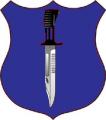Excellent comment, Timothy. I suppose similar curiosities--but much less well articulated--drove me to want to pull together the various threads that had emerged into a section-to-battalion overview, something that Norfolk and others have now offered.
Did you ever post an introduction here?













Bookmarks